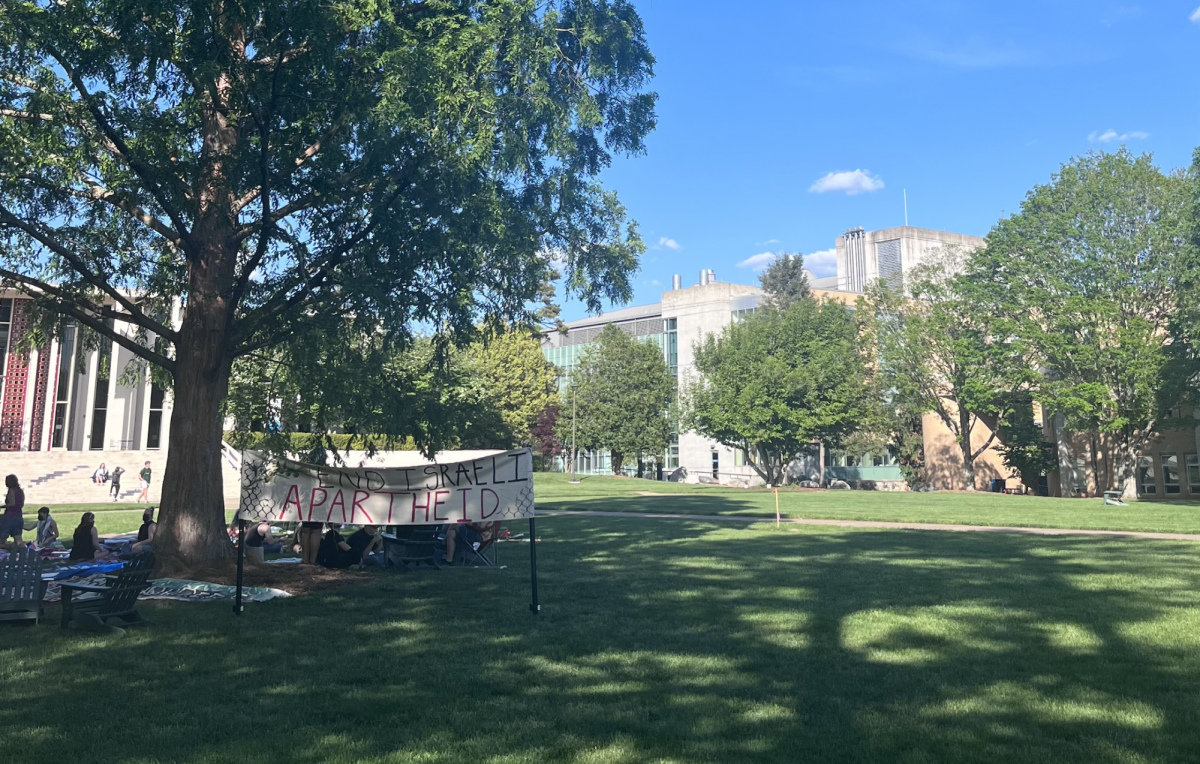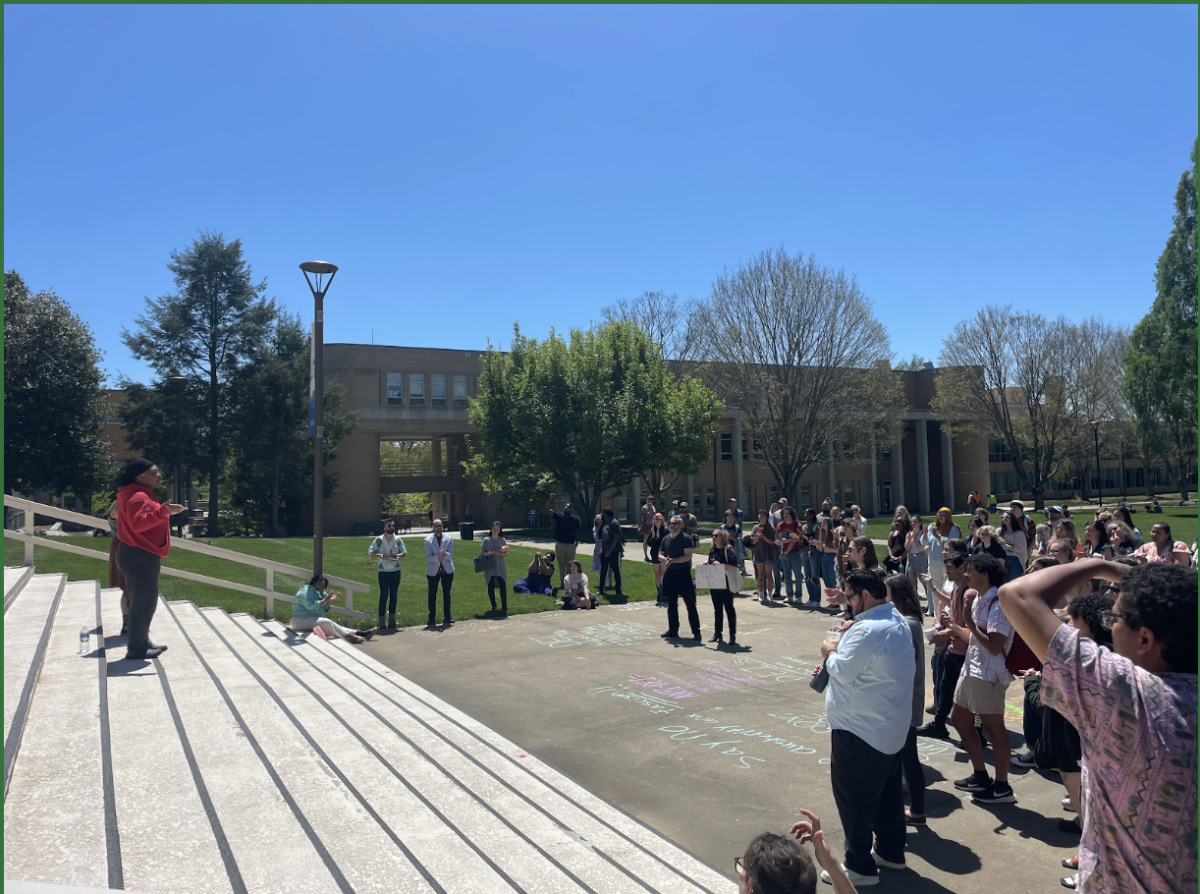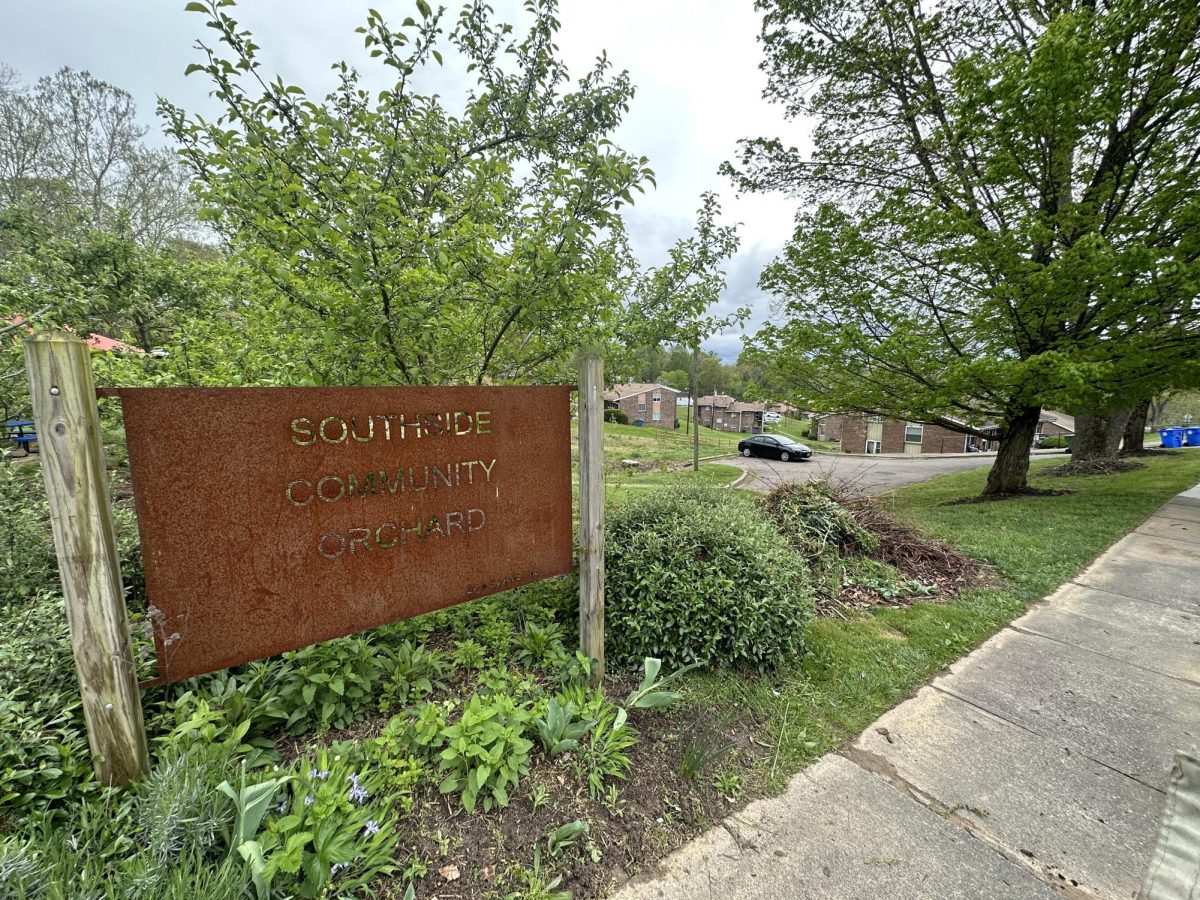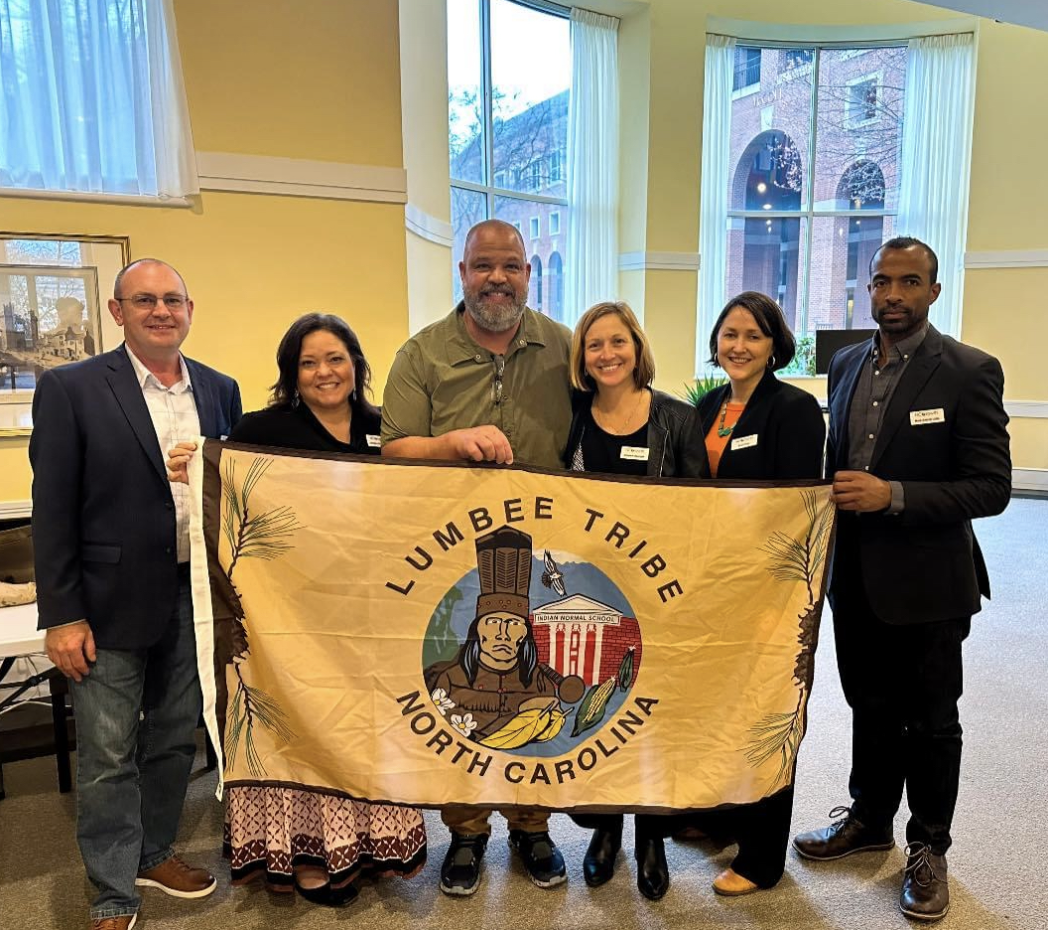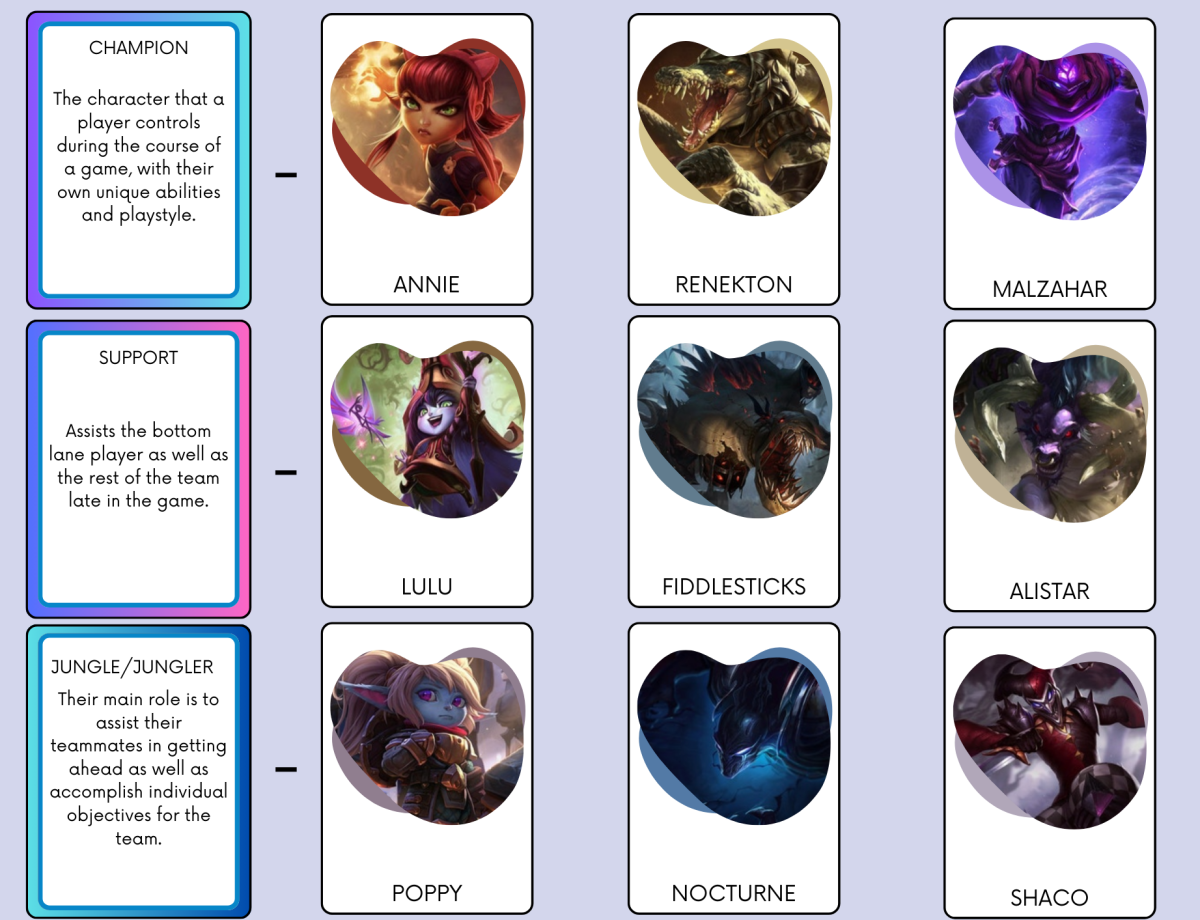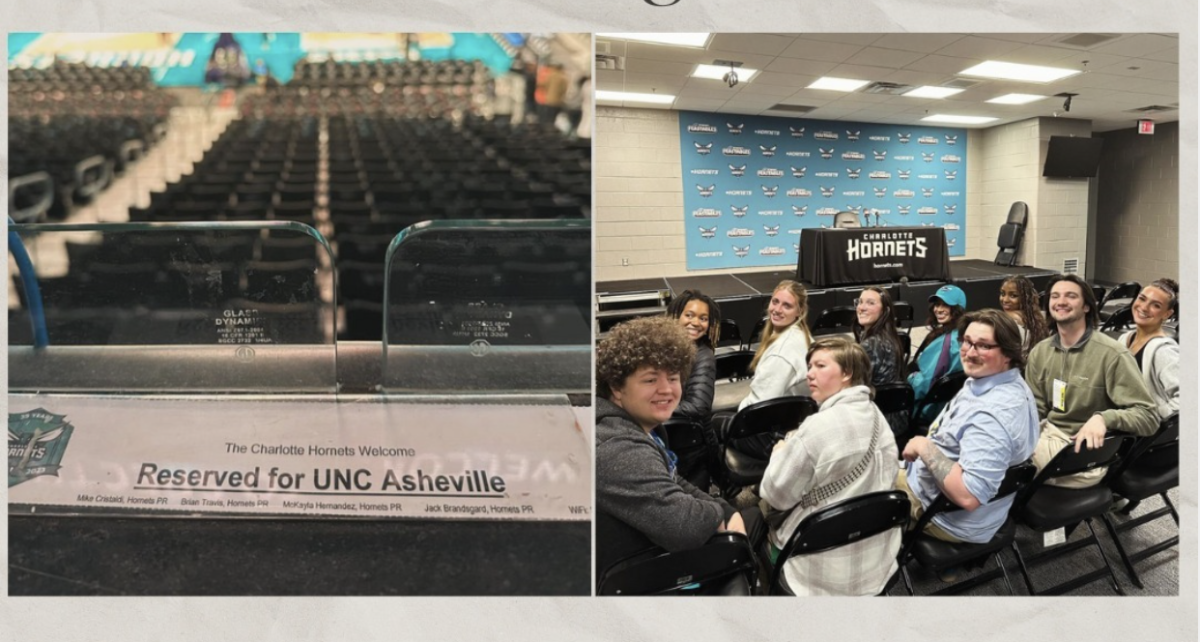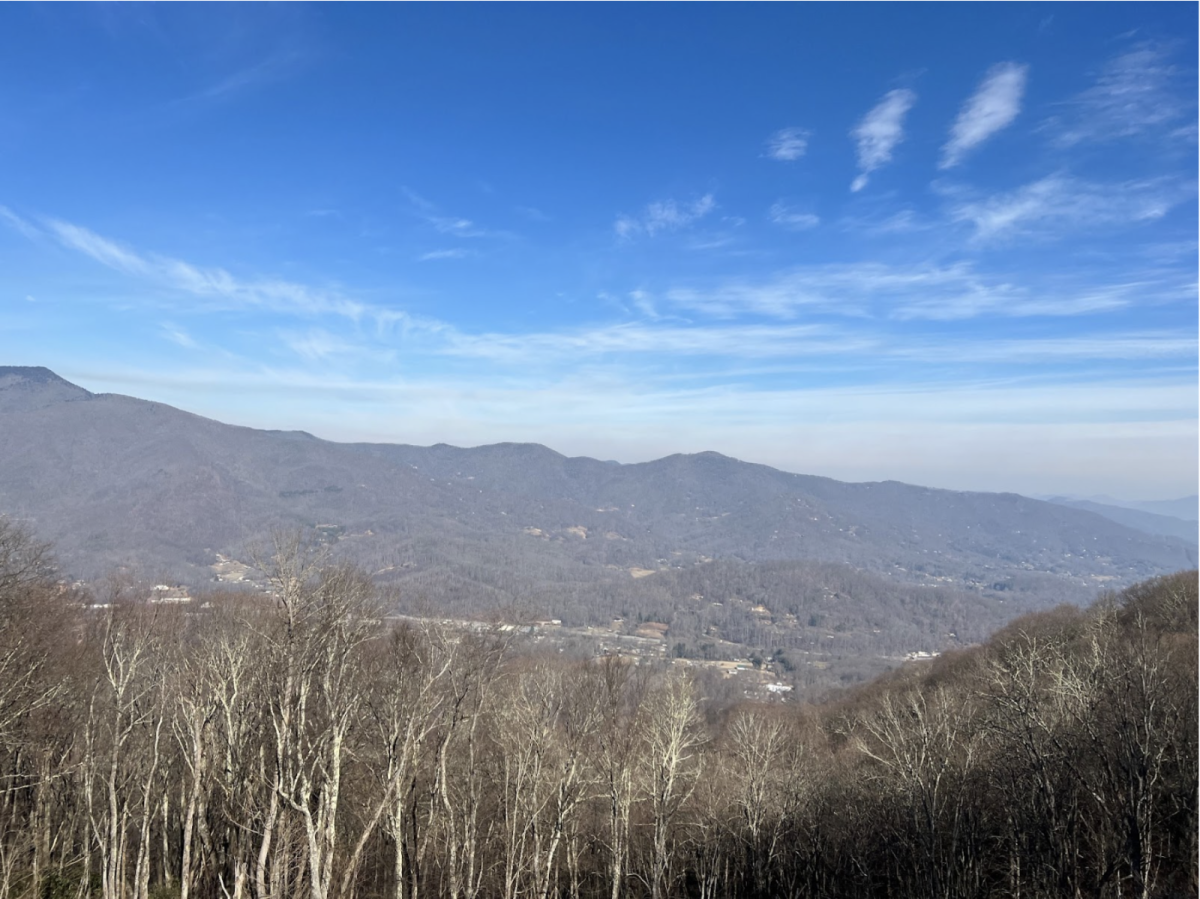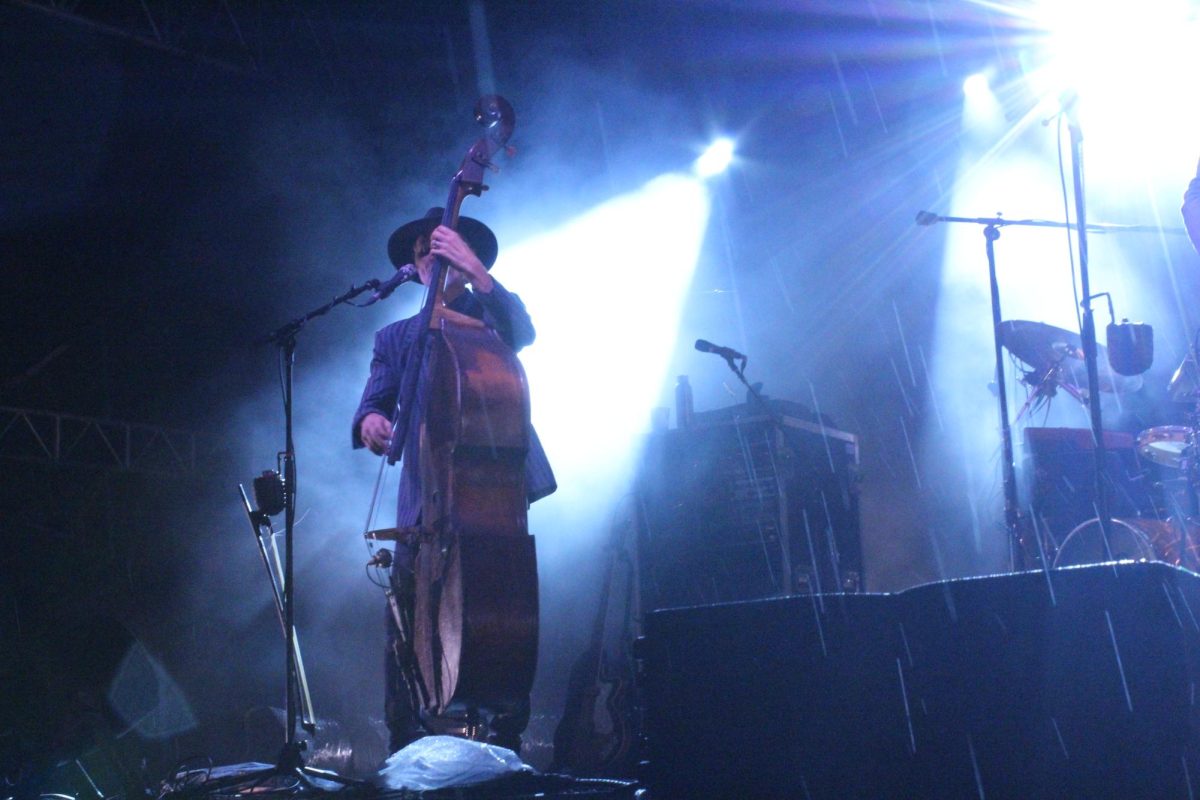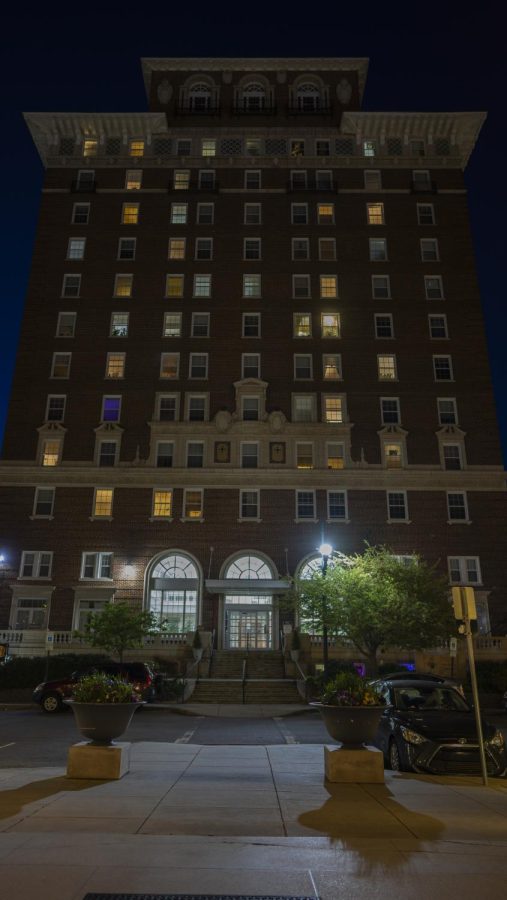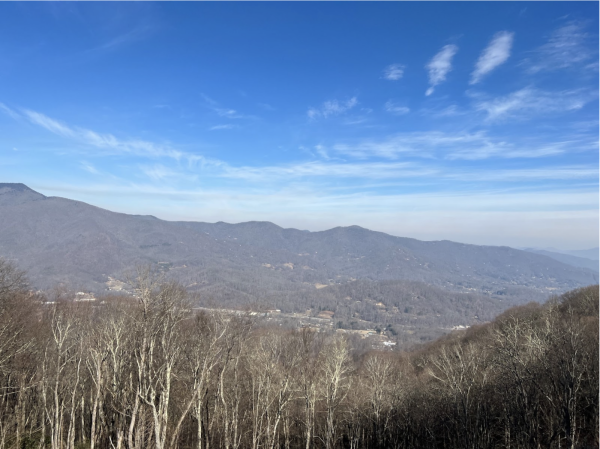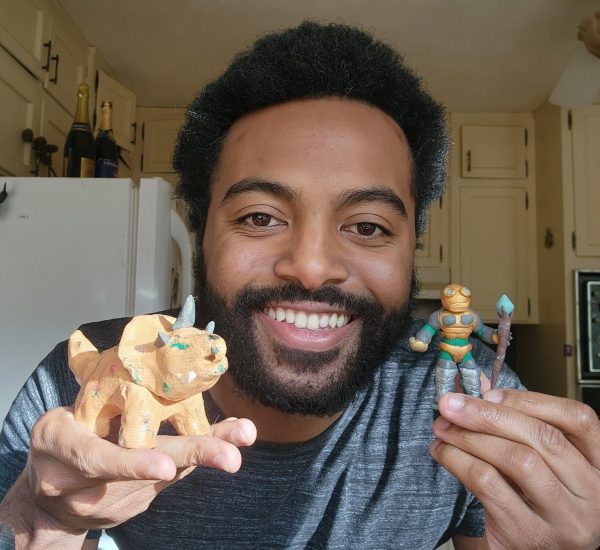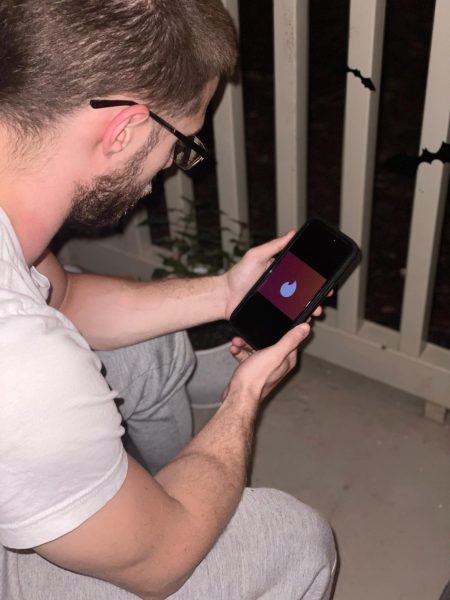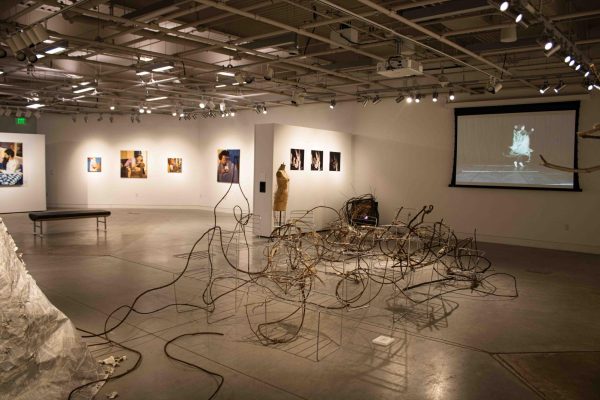The haunting truth about some of Asheville’s infamous buildings
The Battery Park hotel, where the supposed Ghost of Helen Clevanger still roams the halls.
October 31, 2022
The debate of Helen Clevenger’s murder
As thunder and lightning struck the town of Asheville a young 18-year-old girl, Helen Clevenger was brutally murdered in one of Asheville’s most famous hotels in 1936.
Visiting from New York with her uncle, Clevenger was supposed to be asleep in her room, but when her uncle came to check on her the next morning the door was unlocked with a key inside. To his horror he found his niece in a puddle of her own blood with a bullet wound to the head, as well as slash marks across her face.
With thunder raging outside the sound of the gunshot was easily mistaken and no one knew of the foul play taking place.
News broke that the infamous Battery Park Hotel, a place where Babe Ruth, Vanderbilt and other famous people stayed, was home to what the newspapers in 1936 called “one of the most brutal annals of North Carolina crime.” Local officials began scouring the town for the culprit.
“It was the most famous hotel in town, you couldn’t have an unsolved murder there,” said Holley Ross, a tour guide at Asheville Terrors.
Several men were in question for the murder of Clevenger, but Martin Moore, a 22-year-old black man, who worked at the hotel during the time was convicted for the murder 11 days after it happened.
“They needed a scapegoat, they needed someone to take the fall so everything could go back to business,” the tour guide said.
Police said Moore confessed to the murder, though later he said his confession was forced by officials after being beaten for days.
Ross said she heard that Moore confessed to going into Clevenger’s room to rob her, but she woke up and he left without taking anything.
Ross as well as others who still are in search of the actual murderer, blame the manager of the hotel’s nephew.
“I’ve heard the manager’s nephew was in the building at that time and disappeared the next day,” Ross said.
Ross said she had an interview for a job at the Battery Park Hotel a few years ago and upon walking into the building she was met with a heavy and unsettling feeling that immediately deterred her from wanting to take the position. Her interview took place on the third floor, one floor above where the murder took place. While on the third floor she felt sick to her stomach. After the interview she went to the top floor of the hotel where the ballroom is, she said the energy on the top floor felt much lighter. Ross credited the differences in atmosphere to Clevenger having good memories in the ballroom, where she used to dance.
Pepper Parris, an Asheville local and ghost tour guide since the 2000s has her own speculations of who killed Clevenger.
Parris found newspaper articles from 1936, where local officials speculated German violinist Mark Wollner had something to do with the murder after alibi’s gave false locations of his whereabouts on the night of the murder.
The newspaper articles weren’t the only reason why Parris suspects Wollner is guilty of the murder. A taxicab driver outside of the hotel saw a man jump from a ledge and run through town. When Wollner was released after his questioning, he was noted to be walking with a limp. Wollner also had a fancy for wealthy daughters.
“He was known to escort wealthy daughters that would come to stay there,” Parris said.
Parris said she also came across more synchronicities making Wollner an even likelier suspect.
After Wollner was released from questioning he moved to Hendersonville and he went on to manage a symphony in Laurel Park, he lived here until he died in 1969. Between the time he arrived and died there were five unsolved murders. There were also several murders in Montford area before Clevenger’s that went unsolved as well.
“There was another white woman that was killed, Mary Cooper, she was murdered and what happened to her body was so similar to Helen,” Parris said as she flipped through old newspaper articles from the early 1930s.
There was another man who worked at the Battery Park Hotel during the time of the murder, but wasn’t on duty that night, Booker T. Sherrill. Parris said in an interview when asked about the murder of Clevenger he talked about a reoccurring dream he had, where Moore, the man executed for the murder, would come to him.
“Every Thursday night sometimes twice during that night I’ll have a dream where Martin comes to me and says the same thing in every dream, “I didn’t kill ‘em Books, he killed all of them.” That went on for at least two years at that point,” the Asheville local said as she described the interview with Sherrill.
In the reoccurring dream Sherrill had, Parris said she thinks the man coming to him in the dream is talking about Wollner, who allegedly went on to murder more people before and after Clevenger.
The grief-stricken suicide that led to the haunting of an old jail
One notable suicide that led to the haunting of the building behind Pack’s Tavern is Sheriff John Lyerly, he was in law enforcement since he was a young man and formerly known as police chief from 1910 to early 1920 when he killed himself.
Until Vance Pollock, a librarian at the Swannanoa library began researching the suicide, details had not been discussed since newspaper reporting’s following the death of Lyerly in 1924.
“When I found out about Lyerly, we were using a building on Marjorie street that was on loan from the guy who owned packs tavern,” Pollock said as he talked about one of his partners Josh Warren, who is the author of Haunted Asheville.
The two were using the space as a tourist center to share ghost and murder stories, as both Pollock and Warren dedicate a lot of time into researching murders and ghost stories around Asheville.
“I found out that the chief had committed suicide and upon closer investigation, realized it was in that building,” the librarian said.
At the same time Pollock was relaying his new findings with Warren, Warren noticed the date of Lyerly’s death was the same date Pollock found the information. At the same time the two are putting their discoveries together, Warren receives a message from someone on their team who was in the building closing up. The person at the building during the time of these discoveries backed into someone and as they went to turn around and apologize, a black figure faded and vanished from their sight.
That was the first time someone has had a physical interaction with the supposed spirit of Lyerly. Other accounts claimed feeling nauseous and dizzy when stepping into the building and felt a dark and frustrated spirit.
“After doing more research into the life of the sheriff, he was as you might imagine in those days a pretty rough customer, but also a very violent man,” Pollock said.
Pollock said they had people come into the building to try and communicate with Lyerly. On one EVP, electronic voice phenomenon, when asked about why he did it they got back the words, “miss her”. Upon further research, Pollock discovered Lyerly’s wife died a few months before he killed himself.
Those who worked in the building paid close attention to Lyerly’s spirit and once they felt they got to a point where they could trust him, they hired a medium to help him cross over.
“We hired a medium to help John cross over and she said it was very emotional for her, one of the most emotional experiences for her,” Pollock said.
The librarian said this was one of his first experiences with a spirit that had a personality and he said he believes the spirit in the old rock building on Marjorie street belonged to John Lyerly.
“Finding out about all of that was pretty intense,” Pollock said.
But what causes a person’s spirit to remain on earth while their body is buried six feet in the ground is still something Pollock said he has a difficult time understanding.
“I think a lot of times it’s trauma and confusion. If a person dies tragically or suddenly sometimes, they snap out of their physical body and they don’t know what the hell is going on,” Pollock said.
Why is Asheville home to so many ghosts?
Encompassing the town of Asheville lies the oldest mountain range in the world, the Blue Ridge Mountains. Once home to many Native Americans, a battlefront for the civil war and a place of great economic development and collapse.
Parris said Asheville has the third highest number of active vortexes in the world, 24, running closely behind Sedona, Arizona with 28 and the Bermuda Triangle with around 400. Parris also said Asheville sits on top of limestone, which is the most natural conductor of energy there is.
According to Sedona Mago, a vortex is an area of concentrated energy where the Earth’s power lines meet and extend. The energy is described as serene and subtle.
“That explains a lot, it’s just an area of high energy,” Parris said. “Energy can cause anything to happen.”
There are also two types of hauntings that occur, live hauntings and residual hauntings, where something happened repeatedly. Parris said most of the hauntings in Asheville are residual and if you are in an area long enough you can begin to track those reoccurrences.
Librarian Pollock said some people cling to spiritualism and believe their loved ones are still around because it can bring comfort. The large number of folks that died in and around Asheville during the tuberculosis outbreak, the civil war and the Spanish flu could account for more spirits lingering about.
“Spiritualism flourishes when people want to remain in touch with lost loved ones, and the more lost loved ones, the more people who want to remain in touch and I guess that’s how spiritualism thrived so much in those times,” Pollock said.
Pollock said he has also heard talk about Asheville and surrounding areas being home to a lot of old earth energy, which may or may not account for strange sightings.
“I’m not a geologist or anything, but they say there’s pretty powerful materials around the mountains here,” Pollock said.
